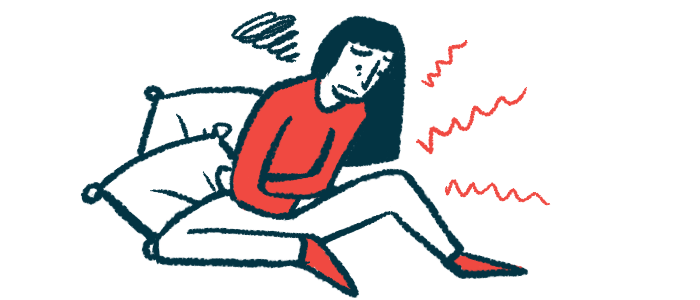Many with unexplained abdominal pain go untested for AHP
Findings reveal critical gap in diagnostic approach to NSAP
Written by |

Hundreds of patients in Japan with unexplained abdominal pain go untested for acute hepatic porphyria (AHP), despite showing a number of the condition’s hallmark symptoms, a study suggests.
Among those who remained undiagnosed after an evaluation at a hospital for abdominal pain, all had two to four characteristic features of AHP. The findings reveal a critical gap in the diagnostic approach to nonspecific abdominal pain (NSAP), a term for when standard tests fail to identify a clear cause, suggesting that rare, but treatable conditions like AHP may be routinely overlooked.
Noting that treatment options exist, the researchers emphasized that “establishing a diagnostic strategy for undiagnosed abdominal pain would provide better opportunities for patients with NSAP and could help shorten the diagnostic journey for those with rare diseases such as AHP.” Their study, “Features of Undiagnosed Abdominal Pain and Diagnostic Status of Acute Hepatic Porphyria in Japan: A Retrospective Study,” was published in the International Journal of Medical Sciences.
Porphyria refers to a group of rare genetic disorders that disrupt the ability to produce heme, a molecule essential for carrying oxygen in blood. AHP includes several porphyria types marked by the buildup of toxic precursors, mainly porphobilinogen (PBG) and aminolevulinic acid (ALA), in the liver. Its symptoms often include abdominal pain, gastrointestinal problems, and neurological or psychiatric issues, such as numbness, confusion, or mood changes.
AHP is often overlooked in everyday clinical settings. This is partly because diagnosing AHP typically requires specialized tests — including urine testing for ALA and PBG, genetic analysis, and excluding more common causes — that aren’t routinely performed. These factors “contribute to a diagnostic delay of up to 15 years from symptom onset,” said the researchers.
This diagnostic gap is especially pronounced among those with undiagnosed abdominal pain, a group likely to include people with NSAP. However, NSAP lacks a standardized clinical definition, which complicates efforts to systematically evaluate these patients or identify rarer causes like AHP.
Factors in diagnosed, undiagnosed AHP
“Hence, for diagnosing AHP, establishing a definition of NSAP is essential and this study aimed to substantially contribute to this effort,” wrote researchers in Japan who analyzed medical records from 1,915 patients with abdominal pain who underwent imaging at hospitals between April 2019 and March 2022 to understand how undiagnosed abdominal pain is evaluated and if AHP is considered. Of the total group, 317 patients (16.6%) left without a definitive diagnosis after a clinical evaluation and imaging workup. These patients were a median age of 55, and 42.3% were male.
The undiagnosed patients were less likely to arrive by ambulance and more likely to come during regular weekday hours. They also had fewer repeat visits for abdominal pain and had their symptoms longer before seeking care.
Imaging was widely used and similar across both groups, with CT scans and abdominal X-rays being the most common. Those who were diagnosed were more likely to have an abdominal MRI or abdominal X-ray.
Three factors were independently associated with a diagnosis — being hospitalized, dull pain, that is, a persistent, deep, and less sharp discomfort, and the absence of depressive symptoms.
The ones who were diagnosed were significantly more likely to have been admitted to the hospital for further evaluation, often for conditions requiring immediate medical intervention, such as ileus or bowel obstruction (10.3%), a blockage in the intestines, or acute appendicitis (10.0%), a sudden inflammation of the appendix. Being hospitalized also led to a broader range of diagnostic tests, such as electrocardiograms, urine analyses, abdominal ultrasounds, endoscopies, and targeted blood work.
Among nonhospitalized patients, the most common outcomes were undiagnosed abdominal pain (23.7%), infectious enteritis (13.9%), an infection of the intestines, and ureterolithiasis (12.7%), a condition marked by the presence of kidney stones in the urinary tract. The researchers said “these patients were likely to have mild or nonrecurrent [abdominal pain] that did not require close examination during hospitalization.”
A second key diagnostic factor was the nature of the pain itself. Those reporting dull abdominal pain were more likely to receive a diagnosis. This type of pain is more commonly associated with more severe disease, “which may help diagnose [abdominal pain] requiring examination or treatment,”, the researchers wrote. “Therefore, NSAP should be defined using factors that differentiate severe [abdominal pain] from mild [abdominal pain] to identify rare, diagnosable, and treatable conditions.”
The presence of depressive symptoms was strongly linked with remaining undiagnosed. The researchers suggested this may be due to depression’s association with functional gastrointestinal disorders, such as irritable bowel syndrome, conditions that cause symptoms, but don’t show abnormalities on imaging tests.
In the undiagnosed group, all the patients had symptom onset after adolescence and reported gastrointestinal symptoms. Nearly half (48.6%) showed autonomic symptoms such as changes in heart rate or blood pressure and an additional 7.9% reported neurological or psychiatric symptoms, all recognized features of AHP.
Although a standard urine analysis was performed in 62.5% of cases, none of the patients were tested for ALA or PBG.
“Establishing a diagnostic strategy for undiagnosed [abdominal pain] would provide better opportunities for managing patients with NSAP and could help shorten the diagnostic journey for those with rare, difficult-to-diagnose diseases, such as AHP,” the researchers wrote.






